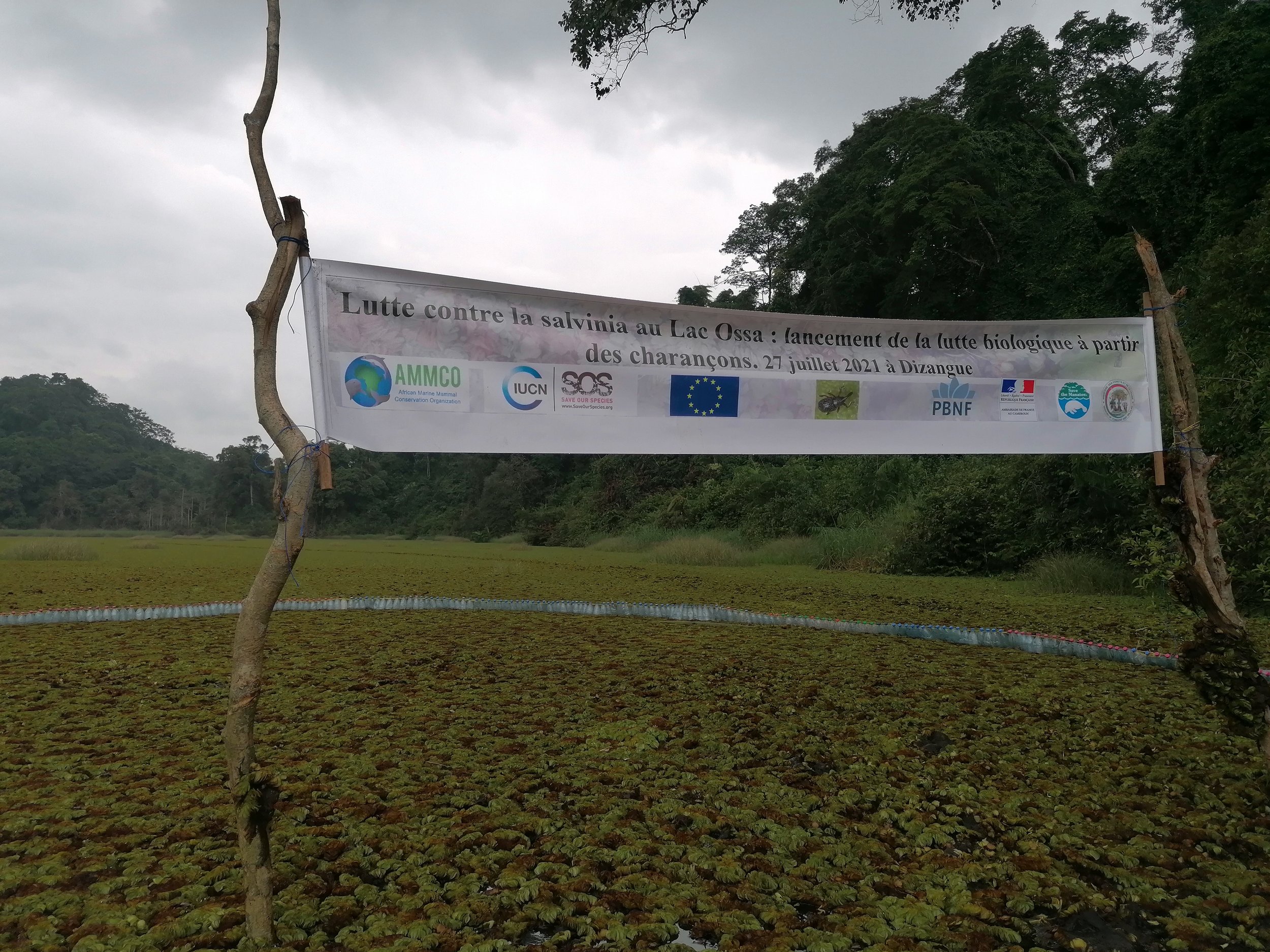Manatees Vs Invasive Species Part II: A Biological Solution
Conservation Stories from IUCN Save Our Species
Told by Mallory Lindsay
Scientists and conservationists in Africa are looking to insects to help save the manatees of Lake Ossa. The manatees are being threatened by an invasive plant that is choking out their native food source— antelope grass. However, scientists are looking to use a unique solution to help their local manatees, called biocontrol.
Biocontrol is a method of controlling invasive species by utilizing their own enemies against them. In the case of the giant salvinia, it would be a tiny South American creature known as the Salvinia weevil (Cyrtobagous salviniae).
For those that know about the history of non-native species introductions, this may not sound like a good idea. Why? Biological control without proper study and planning can lead to more disastrous results— an example being the introduction of the cane toad in Australia.
Luckily, the Salvinia weevil has been studied for more than 25 years. In many cases, this insect cleared giant salvinia infestations by 90% in less than a year’s time, even unclogging entire waterways with their voracious appetite for the weed. Thankfully, the only other species the weevil has been recorded to feed on is the giant salvinia’s cousin— the common salvinia.
Thanks to the support of IUCN Save Our Species’ African Wildlife initiative, co-funded by the European Union, the African Marine Mammal Conservation organization (AMMCO) took on the project and began taking steps for a controlled release of the weevil on Lake Ossa.
Working with their partners at Louisiana State University and the Department of Agriculture of Cameroon, AMMCO created a plan to import the tiny, 4 millimeter long insects—not from South America where the weevils are native to, but artificially infested ponds at Louisiana State University (LSU).
Coincidentally, giant Salvinia also infests many waters across the southeastern United States. So much in fact, the Department of Entomology at LSU mass rears weevils to help mitigate the noxious weed.
Unfortunately, to eradicate the infestation of a lake the size of Lake Ossa, 4 square kilometers or 15 square miles, hundreds of thousands (if not millions) would need to be released— an amount the team at LSU could not provide, let alone ship. In addition, a release too small could result in the weevils being separated by wind and current, potentially eliminating the opportunity for the adults to reproduce.
Surprisingly, it’s not the adult weevils that are the salvinia’s mortal enemy, but the larvae. Upon hatching, the larvae bore into the plant’s rhizome to feed on the plant’s new buds— warping and stunting the plant until it finally begins to sink and decay.
AMMCO needed baby weevils in order to be successful. . .and lots of them.
After much deliberation, it was agreed the project would have to be done in three phases once the weevils arrived in Cameroon: (1)mass rearing in captivity, (2) an experimental control release and monitoring on a smaller lake that is infested with S. molesta, then (3) a large scale release and continued monitoring of weevil impact on giant salvinia infestation of Lake Ossa.
The plan for phase one was to create an environment similar to the lake in a smaller and more controlled space. The initial colony of 250 weevils (all that survey the journey from the States to Cameroon) were kept in small plastic containers until large enough to be moved into pools that mimicked Lake Ossa’s environment— invasive plants and all.
Five months after the weevils arrived, the salvinia plants inside the artificial pools began to brown and decay. A closer look showed larvae had infested the rhizomes.
Phase one worked!!
AMMCO had reached an incredible milestone in their journey to help save Lake Ossa’s African manatees and were ready for the next phase— a controlled release on a section on the lake.
It was a day of celebration as officials placed patches of weevil infested sylvania on an area of the lake. It is with much hope the weevils will reproduce and researchers will begin seeing results in as little as 6 months to a year.
What will be down with the massive mass of decomposing vegetation? Locals are already finding ways to turn the weevil leftovers into compost and charcoal bricks.











